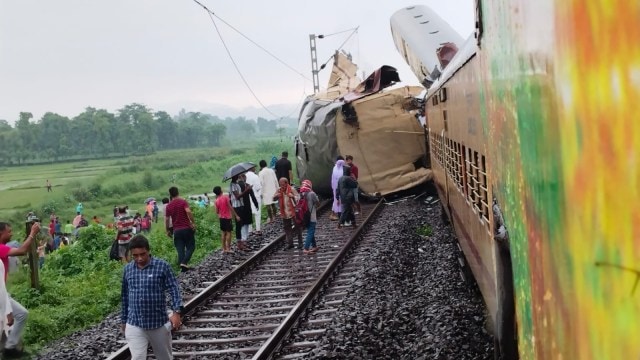
The Indian Railways is back in the news after a freight train rammed into a passenger train on Sunday, June 16, near Siliguri in West Bengal, which left at least nine people dead and more than 40 injured. Since 1995, the country has witnessed seven deadly train accidents, five of which took more than 200 lives — the highest number of deaths, 358, was recorded in the Firozabad collision of 1995. The multiple train collision at Balasore in Odisha, about a year ago, claimed 287 lives. Together, these seven accidents took more than 1,600 lives.
Among railway planners, it is widely held that a large, densely populated developing country like India should have a strong railway system that can compete with road and air transport to serve the needs of the people and economy. Neither the Railway Board nor the Centre has ever denied this imperative. In fact, plans have been repeatedly announced to double the speed of trains while improving safety and drastically increasing line capacity, as most trunk routes have faced acute congestion. But the results have been very discouraging.
The Indian Railways has consistently lost market share in both passenger and freight streams. In fact, since 2010-12, the total volume of both freight and passenger traffic has stagnated or declined, while air and road modes have seen growth of 6-12 per cent each year. Between 2014-15 and 2019-20, passenger traffic declined from 995 billion pass-km to 914 billion pass-km, and freight stagnated between 682 and 739 billion net tonne-km. For the period after 2019-20 to the present, the Railways has not made these traffic figures public.
It is no exaggeration that the Indian Railways (IR), which enjoys a monopoly on rail transportation, is facing a severe crisis. If the present trend of declining market share continues for another decade, which seems likely in view of the failure to raise speed, increase line capacity, and improve safety to the required, IR could be relegated to a secondary role where it primarily carries heavy freight and some slow-moving passenger trains, as in large, thinly populated, economically advanced countries like the US, Canada, and Australia. Surely, with its high population density, a large developing country like India can’t afford such a decline in rail transport.
Rail safety must be viewed in this larger context. Over the past two decades, the Railway Board, the highest administrative body under the Union Minister of Railways, has been a rudderless ship, marked by abrupt changes in policies and plans for the future growth and expansion of the IR network. It has failed to raise the speed of its excruciatingly slow trains, the punctuality of trains has shown no improvement, and safety has continued to be worrying.
The Comptroller and Auditor General (CAG) of India has recently issued two important reports on safety, speed, and punctuality on IR. The report on speed and punctuality for the years 2019-20 says that between 2014 and 2019, there has been no increase in the average speed of mail and express trains —this has remained at 50 to 51 kmph, contrary to claims of achieving an average speed of 75 kmph under Mission Raftar, which has appeared in some form every five to seven years since 2005. As for freight trains, the average speed actually declined marginally, contrary to the Board’s claims of doubling the speed. It is pertinent to mention that 20 years ago, IR acquired technology and manufacturing capabilities to build coaches and locomotives to raise the maximum operational speed from 110-130 kmph to 160-200 kmph.
The second CAG report, which is on accidents, is equally sobering. Though there has been some reduction in the number of accidents, it is largely a result of the manning of unmanned railroad crossings. The data shows little improvement with respect to derailments and collisions. The report has expressed serious concerns about the continuing high rate of asset failures, particularly signal failures and rail fractures. Some of the worst accidents on IR have been due to these. Last year’s multiple train collision at Balasore was caused by a signal failure. The essence of these two CAG reports is that this high asset failure rate, coupled with numerous speed and capacity bottlenecks in the existing IR network, has led to inadequate safety and punctuality and stagnant speed.
While the IR’s existing network was caught in a downward spiral, with increasing intensity every passing year, the country was inundated by big plans for extremely costly projects with seriously questionable financial viability. This included, for example, plans for several standalone bullet-train lines which would be cut off from the main broad gauge network because these lines would be built on standard gauge, and dedicated freight corridors (DFCs), exclusive to heavier and longer trains. Construction of the first bullet-train line started in 2017. Earlier, in 2012, construction of two DFCs had begun. In the past three years, the nation has seen the introduction of about 50 pairs of “semi-highspeed” Vande Bharat trains, which are more about luxury and cosmetics than speed.
Clearly, a thorough review of the misplaced priorities of the past two decades that are driving IR to a terminal decline is absolutely required. Will the new government pick up the gauntlet?
The writer is a former Railway Chief Engineer
© The Indian Express Pvt Ltd
First uploaded on: 18-06-2024 at 20:06 IST



